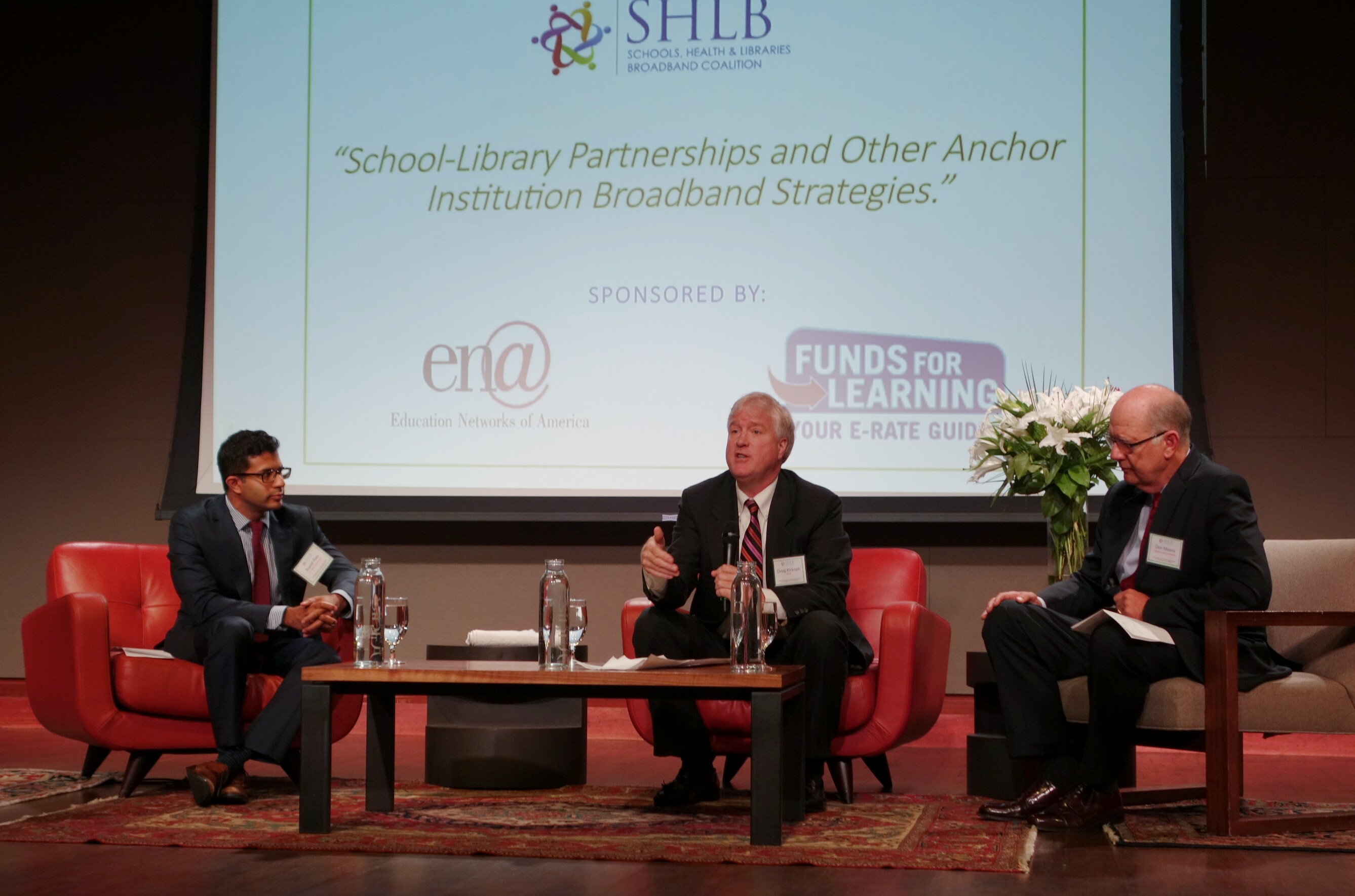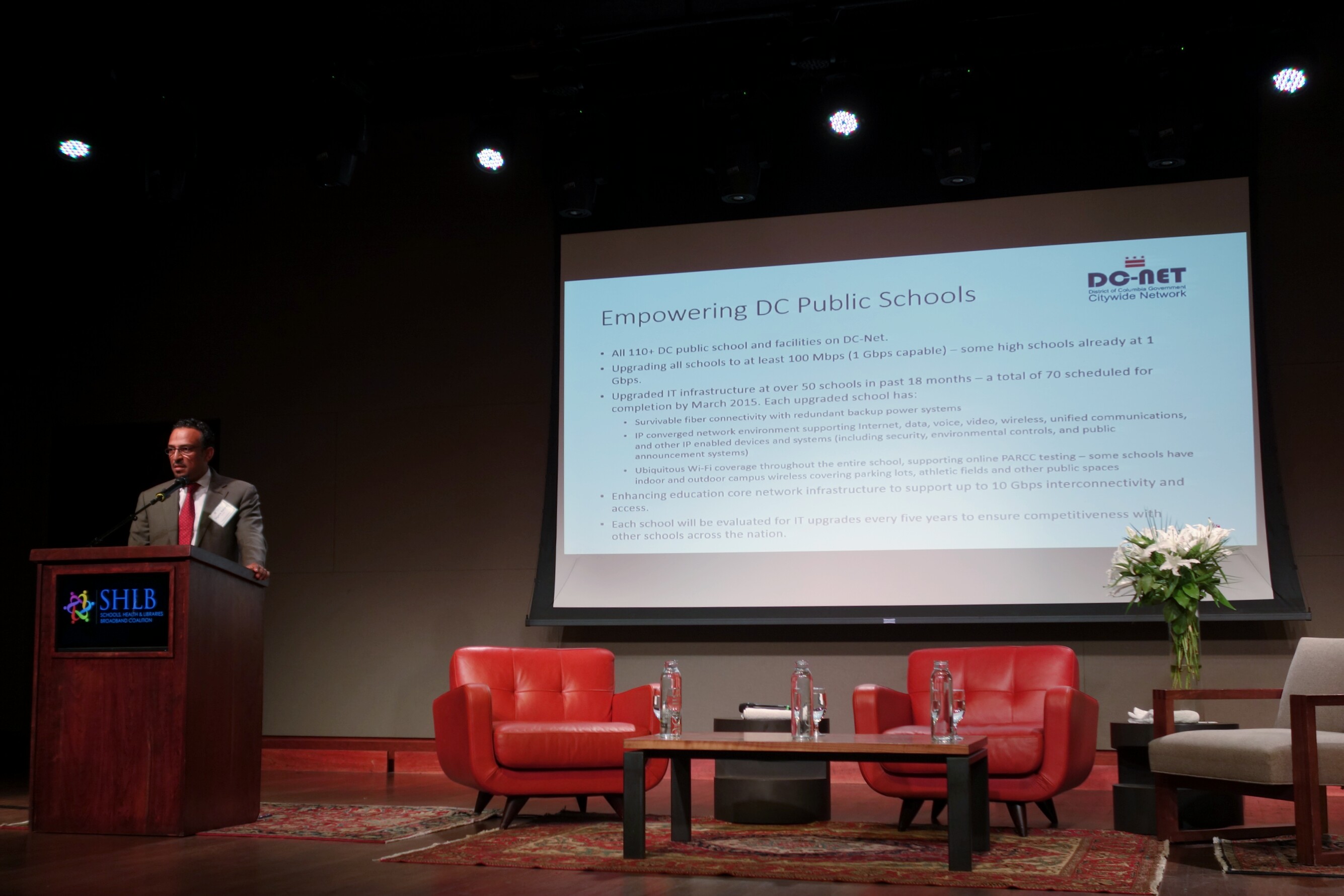At Schools and Libraries Broadband Conference, Educators Lament Lack of Internet Funding
WASHINGTON, October 10, 2014 –High-capacity internet and networked services are the future of education because they will provide instructors and students with the necessary connectivity and capacity for 21st century educational technologies, said the Indiana state director of Education Networks of
WASHINGTON, October 10, 2014 – “High-capacity internet and networked services are the future of education because they will provide instructors and students with the necessary connectivity and capacity for 21st century educational technologies,” Indiana state director of Education Networks of America told attendees at 2014 the Schools, Health and Libraries Broadband Coalition conference here on Thursday, October 2.
Increasingly, fiber-optic technologies will be crucial to meeting those needs, said Merle Gruesser of the Indiana network.
Most conference attendees agreed that the Federal Communications Commission’s E-rate program offering internet connectivity to schools and libraries didn’t have enough funding.
Elaine Williams, the CEO of ConnectED Consulting Services, said that FCC Chairman Tom Wheeler’s July announcement of $1 billion for Wi-Fi connections for schools and libraries was simply not enough to meet the needs of these anchor institutions.
They focused on the current $2.4 billion funding cap for the E-Rate program. Originally implemented in 1997, the cap has stayed the same over the years even as the demand has risen to about $5 billion, said John Harrington, the CEO of Funds for Learning.

from left to right: Sujeet Rao, Dept of Ed; Doug Kinkoph, NTIA; Don Means, SHLB Chairman of the Board.
Representatives from the Obama Administration were present to give executive branch’s perspective.
Sujeet Rao, a Special Assistant in the Department of Education who leads some of the special initiatives like ConnectED, reiterated the importance of the president’s ConnectED initiative, which challenged the FCC to overhaul the E-rate program.
Doug Kinkoph, the Associate Administrator of the U.S. Department of Commerce’s National Telecommunications and Information Administration, reaffirmed the need to invest in broadband infrastructure. He said the agency’s efforts to serve as a “match-ma”er” between communities and foundations is helping to make up for the lack of federal funding.










Member discussion